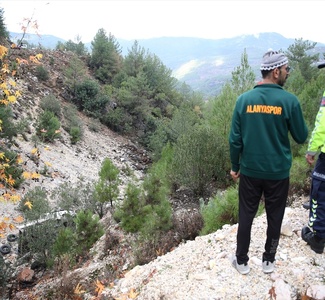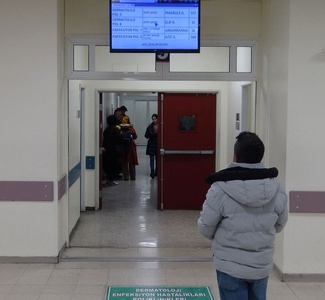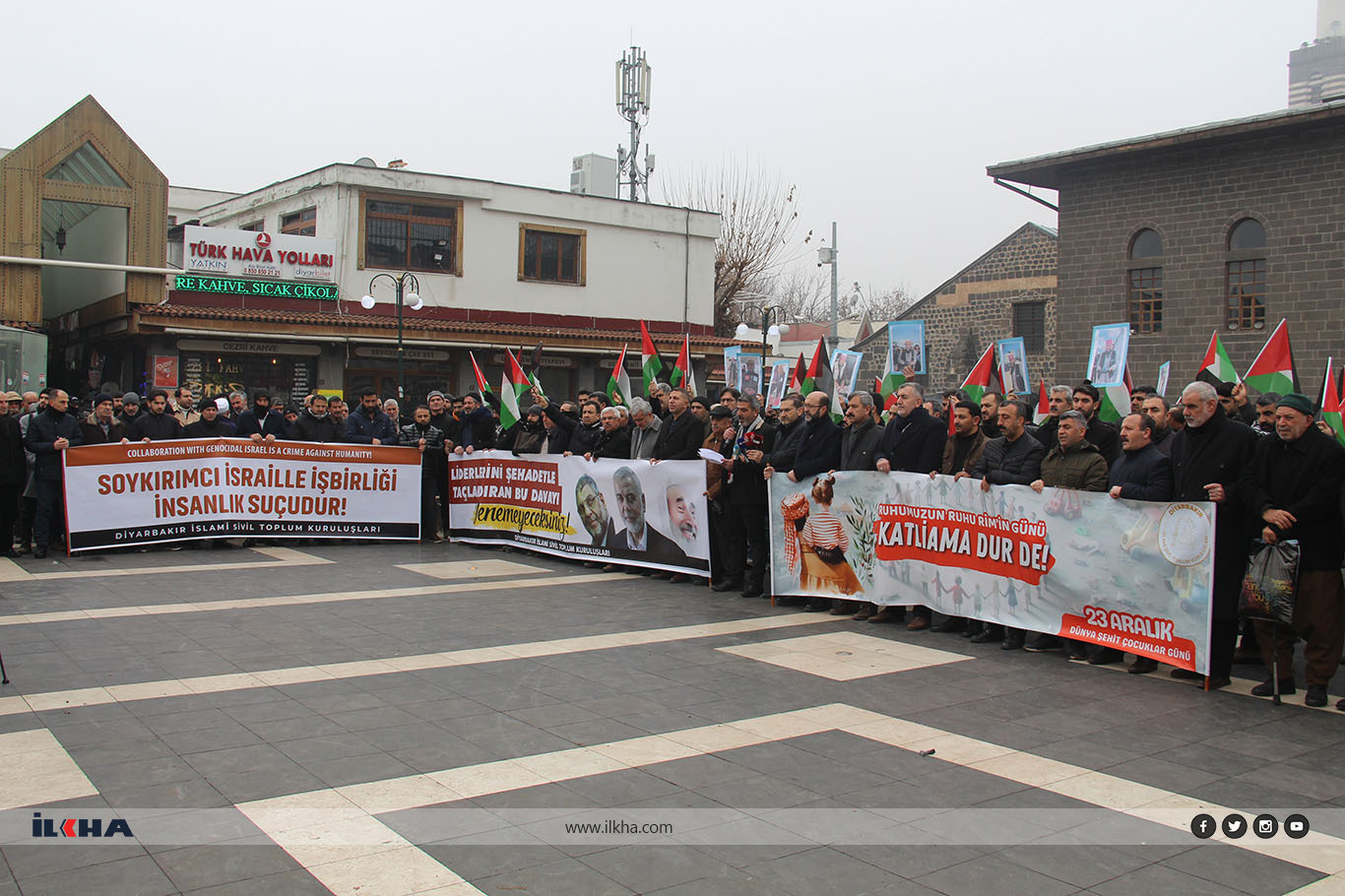Türkiye’s population exceeds 84.6 million—statistical agency
Turkish Statistical Institute (TurkStat) released the “Population and Housing Census, 2021” on Monday.

 Google News'te Doğruhaber'e abone olun.
Google News'te Doğruhaber'e abone olun. The United Nations and European Union (EU) recommend that countries make a “population and housing census” in years close to years ending in “0” in order to obtain internationally comparable statistics on population.
In this context, “Population and Housing Census (PHC), 2021” was carried out based on administrative registers by Turkish Statistical Institute (TurkStat) in a similar manner with the EU member states.
In Türkiye, the information which should be produced within the scope of PHC, 2021 such as population size at locality level, age and sex structure, marital status, education level, migration, country of citizenship, place of birth and type/structure of households are produced regularly from the Address Based Population Registration System (ABPRS) annually. In this respect, PHC, 2021 has the same reference date with the ABPRS as 31 December 2021 and basic results of PHC, 2021 are derived from the ABPRS data.
Labor force indicators were obtained by recalculating the Household Labor Force Survey (HLFS) data, taking into account the population size and demographic characteristics from ABPRS, and including the institutional population. The labor force status of the institutional population was determined on the basis of administrative records.
On the other hand, due to insufficient administrative data sources to produce information on housing characteristics, TurkStat conducted the “Survey on Building and Dwelling Characteristics (SBDC), 2021” in October 2021-April 2022 period in order to eliminate the lack of information in this field. Sampling structure of the study was designed in such a way as to produce estimates at the provincial level and to be integrated with the ABPRS.
The population of Türkiye became 84 million 680 thousand 273
In the early years of the Republic, the population of Türkiye was 13 million 648 thousand 270 people according to the results of the population census which was conducted in 1927. It showed a continuous increasing trend over the years and reached 84 million 680 thousand 273 people in 2021.
When the population was examined by sex, while the female population outnumbered the male population in the first years of the Republic of Türkiye due to the previous war period, the female and male population reached almost equal size over the years.
While the male population was 6 million 563 thousand 879 in 1927, it became 42 million 428 thousand 101 in 2021. The female population, which was 7 million 84 thousand 391 people in 1927, became 42 million 252 thousand 172 people in 2021.
When the population growth rate of Türkiye was analysed by years, it was seen that the annual population growth rate, which was 21.1 per thousand in 1935, became 12.7 per thousand in 2021.
The age structure of Türkiye's population changed
Population pyramids are the graphs that show the changes in the age-sex structure of population. When the population pyramids of Türkiye were examined for the years 1935, 1960, 2000 and 2021, it was seen that, owing to the developments in healthcare field and the improving living standards and welfare level, the decrease in fertility and mortality rates and the increase in life expectancy at birth changed the age structure of the population. As a result, the elderly population and median age increased and the share of children and youth in the total population decreased. Although Türkiye still had a younger population compared to countries having a proportionally elderly population, the elderly population was quite high quantitatively.
The median age of Türkiye's population increased
The median age, one of the important indicators used in the interpretation of the age structure of the population, increased to 33.1 in 2021 from 21.2 in 1935 for Türkiye. When it was analyzed by sex, it was seen that the median age increased from 19.1 to 32.4 for males and from 23.4 to 33.8 for females in this period.
The proportion of population in the working age group increased to 67.9%
The proportion of the working-age population aged 15-64 increased from 54.7% in 1935 to 67.9% in 2021. On the other hand, while the proportion of child population aged 0-14 was 41.4% in 1935, it showed a decreasing trend over the years and declined to 22.4% in 2021. The proportion of the elderly population aged 65 and over, which was 3.9% in 1935, became 9.7% in 2021.
The proportion of those who never married was higher among males
In Türkiye, when the distribution of marital status was analyzed by years and sex, it was observed that the proportion of never-married people is higher among males than females, while the proportion of widowed and divorced people is higher among females than males. On the other hand, it was seen that the proportion of married people, which made up the vast majority, was close to each other for both sexes over the years.
The proportion of illiterate female population decreased to 4.2%
While the proportion of the illiterate population in Türkiye was 80.8% in 1935, this proportion showed a continuous downward trend over the years and decreased to 2.5% in 2021. When analyzed by sex, the proportion of illiterate male population decreased from 70.7% in 1935 to 0.8% in 2021. The proportion of illiterate females also declined from 90.2% in 1935 to 4.2% in 2021.
The proportion of higher education graduates was 17.6%
In Türkiye, the proportion of primary school graduates was 22.5% in 2021 while it was 28.8% in 1970. The proportion of primary education, lower secondary school and equivalent school graduates increased from 3.6% in 1970 to 25% in 2021. While the proportion of high school and equivalent graduates was 2.6% in 1970, it became 22.4% in 2021. On the other hand, the proportion of higher education graduates, which was 1% in 1970, reached 17.6% in 2021.
The proportion of male higher education graduates was more than that of females
When the educational attainment in Türkiye was analysed by years and sex, it was seen that the proportion of primary school graduates had the highest proportion in 1970 with 36.5% for males and with 20.9% for females. On the other hand, in 2021, the proportion of primary education, lower secondary school and equivalent school graduates had the highest proportion among males with 27.4%, whereas primary school graduates had the highest proportion for females with 25.6%.
When the higher education graduates were examined by years and sex, it was seen that the proportion of higher education graduates was 1.3% for males and 0.6% for females in 1970. On the other hand, this proportion increased for both sexes in 2021 and became 18.5% for males and 16.7% for females.
In Türkiye, 2 million 777 thousand 797 people migrated across provinces in 2021
In Türkiye, the proportion of population migrated across provinces, which was 3.18% in the 2007-2008 period, followed a fluctuating course over the years and became 3.28% in 2021. In other words, in 2021, 2 million 777 thousand 797 people migrated across provinces in Türkiye. 47.5% of this population consisted of males while 52.5% were females.
3.7% of the population residing in Türkiye was born abroad
It was observed that 94.9% of the 84 million 680 thousand 273 people residing in Türkiye were born in Türkiye and 3.7% were born abroad. The proportion of those whose place of birth was unknown was 1.4%. On the other hand, while the proportion of those born in the province they reside was 63.8%, the proportion of those born in a province different than they reside was 31.1%.
Bulgaria-born persons took the first place among foreign-born population
Those born in Bulgaria ranked first place with 11.4% among 3 million 141 thousand 351 people who were born abroad and are residing in Türkiye. Bulgaria-born people were followed by those born in Germany with 10.5%, Iraq with 10.4%, Syria with 8.8% and Afghanistan with 5.7%, respectively.
The foreign population residing in Türkiye was 1 million 792 thousand 36 people in 2021
While the foreign population residing in Türkiye was 1 million 792 thousand 36 people in 2021, 49.7% of this population was males and 50.3% was females. When the foreign population residing in Türkiye was analyzed by country of citizenship, it was seen that Iraqi citizens were in the first place with 18%. Citizens of Iraq were followed by the citizens of Afghanistan with 10.2%, Iran with 7.2% and Turkmenistan with 6.9%.
The proportion of one-person and multi-person no-family households increased
When household types in Türkiye were examined, it was seen that the proportion of single-person households and multi-person no-family households of which members are not related to each other as couples or parent or child showed an increase over the years.
The proportion of one-family households and extended-family households decreased
It was seen a decrease in the proportions of one-family households, which are defined as households comprising a couple without children or a couple with at least one child or a lone parent with at least one child, and extended-family households which are defined as households covering at least one nuclear family household together with non-family member(s). On the other hand, the proportion of nuclear family households composing of lone parents with at least one resident child showed an increase.
The number of households became 25 million 329 thousand 833
The number of households, defined as a person living alone or a group of persons living at the same address, with or without any kind of kinship, increased from 21 million 91 thousand 75 in 2014 to 25 million 329 thousand 833 in 2021 in Türkiye.
The average household size was 3.23
It was observed that the average household size in Türkiye, which was 4 people in 2008, showed a tendency to decrease over the years and became 3.23 people in 2021.
The most popular baby name was Yusuf for boys and Zeynep for girls
In Türkiye, when the names given to babies born in 2021 were examined, it was seen that Yusuf for baby boys and Zeynep for baby girls took the first place. When the most used names among the overall population of Türkiye were examined by sex, it was observed that the name Mehmet for males and the name Fatma for females were in the first place.
The share of people living in their own dwellings was 60.7%
When the households were analyzed by the ownership status of the dwelling, it was seen that the share of households owning the dwelling they reside in was 60.7% while the share of those living in a rented house was 27.6%. The share of those not paying rent despite not living in their own dwellings was 8.4% and the share was 0.9% for those living in lodging.
The labor force participation rate was 51.9%
The labor force participation rate for the population aged 15 and over was 51.9% in Türkiye. When it was analyzed by sex, it was seen that the labor force participation rate was 69.9% for males and 34% for females. The employment rate was 46.2% for total, 63.3% for males and 29.2% for females. On the other hand, the unemployment rate was 10.9% for total, 9.4% for males and 14.1% for females.
57.7% of employment was in the service sector
When the distribution of employment was analyzed by the three main sectors as agriculture, industry and service, it was seen that the service sector had the highest share in total employment with 57.7%. When it was evaluated by sex, 55.5% of males and 62.4% of females were employed in the service sector.
When the sex distribution of the industrial sector, which had the second largest share in employment with 26.9%, was examined, it was seen that 31.3% of males and 17.6% of females were employed in this sector.
Considering the distribution of the agricultural sector, which had the third largest share in employment with 15.4% for total, it was seen that 13.2% of males and 20% of females were employed in the agricultural sector.
The share of the regular or casual employees were 71% among those employed
When the distribution of employment was analyzed by the status in employment, it was seen that the regular or casual employees had the highest share with 71% in total employment. This was followed by self-employed with 15.8%, unpaid family workers with 8.5% and employers with 4.7%.
When the distribution of the status in employment was examined by sex, it was seen that regular or casual employees took the first place with 71% for both sexes. While self-employed with 19.1% took the second place for males, 18.2% of females were unpaid family workers.
Household chores was the most important reason for females not in the labor force
Among the population aged 15 and over in Türkiye, the majority of the population that was not in the labor force was those who were busy with household chores with 31.2%. This was followed by those who continued their education/training with 18.2%, retirees with 16.6%, and those who were disabled, old, ill etc. with 15%. When the reasons for not being in the labor force were analyzed by sex, it was seen that the most important reason for females was being busy with household chores with 45.2% and retirees with 38.6% for males.
Only 1 person was employed in 47% of 4-person households in Türkiye
When the number of people in employment by household size was analyzed, it was seen that 60.4% of those living alone, 44% of 2-person households and 14.1% of 3-person households had nobody in employment. On the other hand, it was seen that 47% of the 4-person households had only 1 person in employment, while 34.3% had 2 persons in employment.
The Labor force participation rate of those born abroad was 44.3%
Among the population aged 15 and over in Türkiye, the labor force participation rate of those born in Türkiye was 52.6% in total, 70.5% for males and 34.7% for females. The labor force participation rate of those residing in Türkiye but born abroad was 44.3% in total, 65.1% for males and 25.8% for females. (ILKHA)



















































